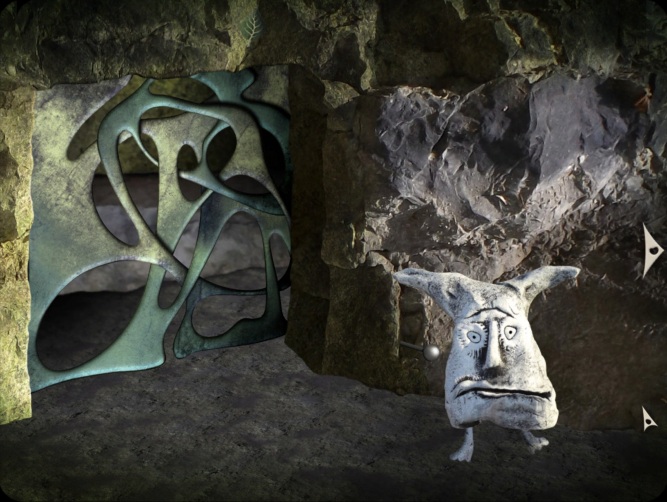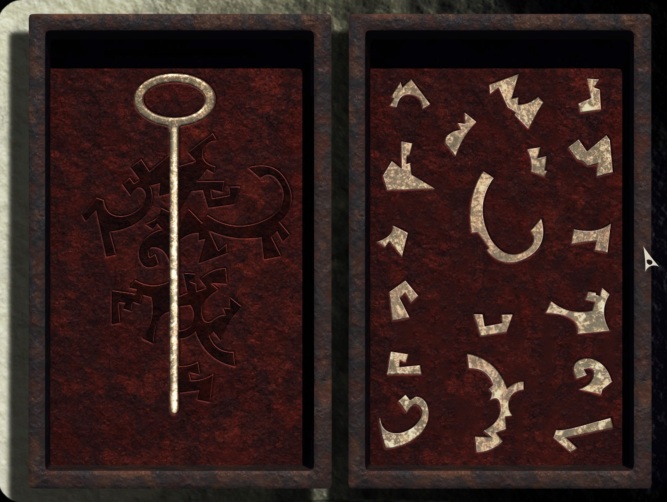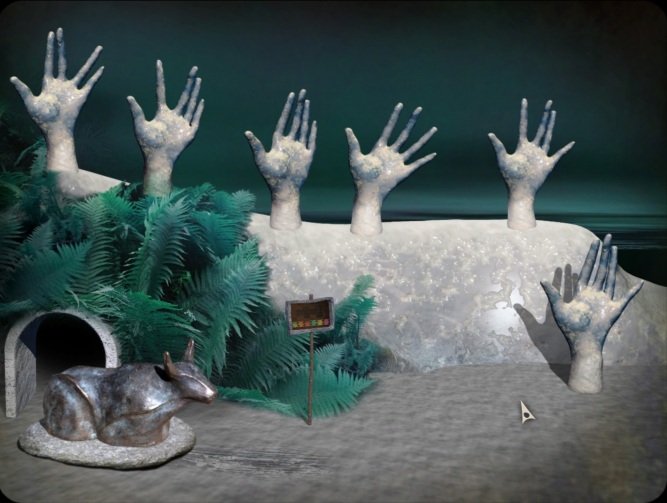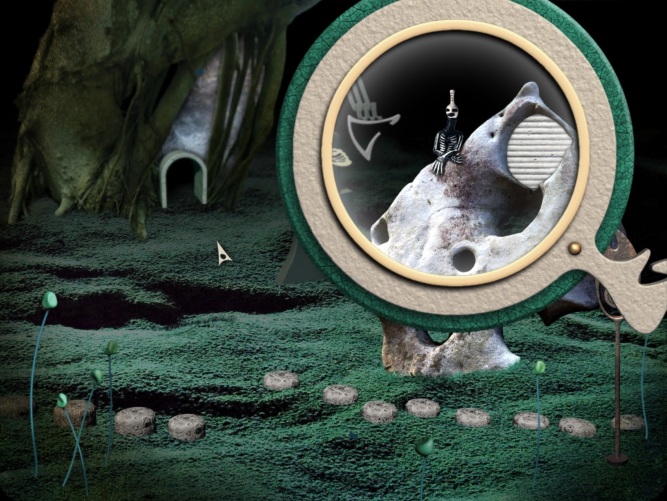LEAVES: The Return is a point and click puzzle game with little to no instructions. Help the Treefruities recollect the leaves for their tree by solving puzzles to access new areas until you’ve found where all the leaves landed. Puzzles require logic, memorization, experimentation, and more. It also features a relaxing soundtrack and wordless story.
Release Date: March 14th, 2017
Developer: ZAR 21
Publisher: Daedalic Entertainment
Format: PC Game
First playthrough time: 2 hours

Meet the Treefruities and their tree
Major Pros:
- Diverse puzzles
Minor Pros:
- Strange hidden characters to find
- Wordless storytelling

My favorite very grumbly character
Major Cons:
- Tedious movement
Minor Cons:
- Memorization
- Short

One of the first two puzzles the player encounters
LEAVES: The Return features a variety of different puzzles to help move the player through the various rooms. Some of these can be as simple as finding an item in another area that gives the answer, while others involve visiting many rooms, fitting numbers together, or memorizing complex shapes. The difficulty of the various puzzles will probably depend on the player. I found most of the puzzles to fall in the medium range, with a couple in the low and a couple in the high. While I liked the puzzles, the game did struggle a little with requiring guess-and-check mechanics to make some of the puzzles harder without good reason.

One of the simpler puzzles
The game also had a hint system in which you solve a simple visual puzzle of overlapping black and white rings to get the answer to the puzzle you’re at. I would have appreciated something that didn’t directly give the player the answer, but I appreciated having to solve a simpler puzzle to get a hint (although I only tried once).

Hint puzzle interface
My main problem with the game was the movement system. There are multiple factors that contributed to this. First was that many of the paths in the game had no branching and were thus rather straight and long. This was clear from the map, however the map did not enable any fast travel, even though there was no gameplay reason why not. This might have been fine if not for the second factor which was that these paths were progressed through simultaneously, and you often had to walk back and forth between them to make a little progress on each. If the linear paths had instead been traversed linearly, then this wouldn’t have been an issue. (Although linear pathing in this genre would have only been a slightly less egregious problem then a lack of ergonomic movement.) The third factor that really sealed the deal for me on this being a problem was the frequent need to visit another location to see an answer or hint to the puzzle you were working on. This may involve memorizing 6 or 7 subtly different shapes and their arrangement before traversing across several rooms to input them into a puzzle. Other games might provide the player with notes or the ability to take pictures, but instead I resorted to doing this manually by taking screenshots when something interesting came up. There were a few times in the game when the player was given something such as a scrap of paper that had a hint on it. However when you do reach the puzzle to which that applies, there’s no way to keep the hint on the screen while you try to use it in the puzzle. You can either view the hint or the puzzle, which also results in having to memorizing abstract content in order to input it. Other movement related issues included having to repeatedly resolve a maze puzzle every time you wanted to pass through a rather common corridor (while holding in your head the answer to another puzzle) and the fact that connected rooms did not always share visual theming which made it seem arbitrary to remember what was connected.

One of the early hints the player must memorize
The story in LEAVES: The Return is simple and told entirely without words. There are a few characters that talk, but they do so in unintelligible mutterings or grumblings which share meaning through tone or body language. I found these characters amusing, though not very deep. The characters are visually unique, with the exception of the “stick people” who act more as scenery. The player also starts the game off with a monocle that can be used to discover hidden residents. This has no effect on gameplay, but can be a fun sort of collectible for an interested player.

This hidden character plays their rock like a didgeridoo
My biggest sadness with LEAVES: The Return was that it was fairly short. Despite some of my issues with it, I really enjoyed the puzzles and the effort put into making each of them unique, with different levels of difficulty and number of steps to completion. The aesthetics of the game were fun and I found the gameplay both relaxing and engaging. Overall I would recommend the game as a short point and click puzzle experience.
Find this game at the developer’s website or on Steam.
Categories: Desktop games, Video game reviews